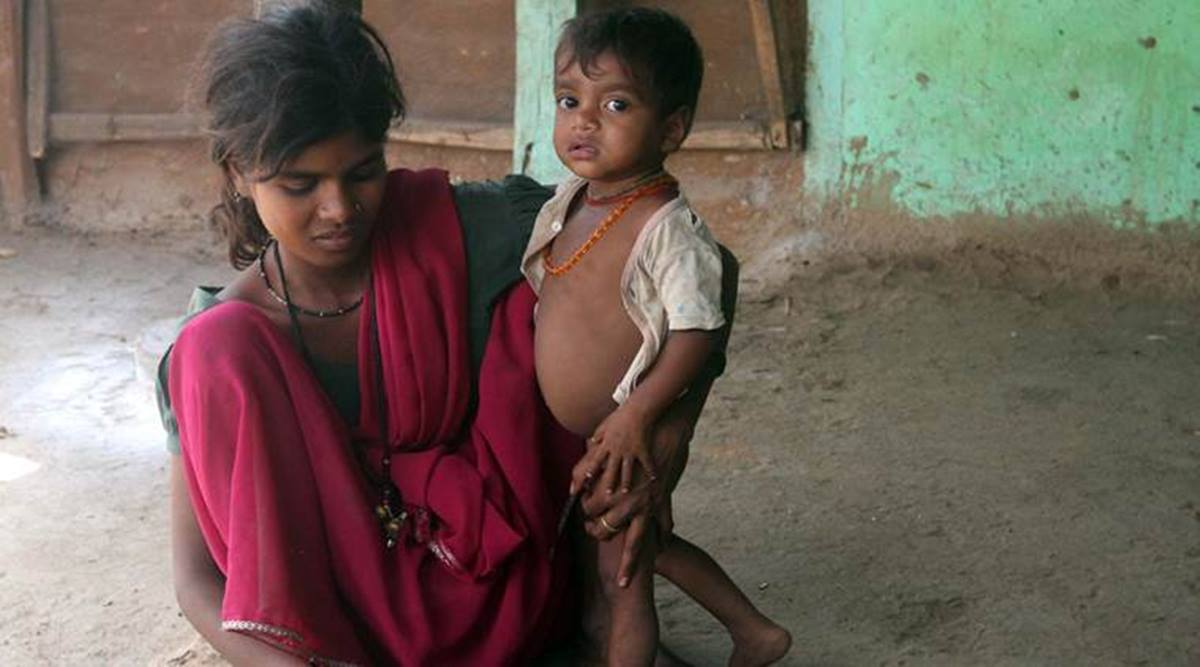
The Indian Express
Women and child ministry steps up efforts to address malnutrition across Maharashtra
I A Kundan, secretary, Women and Child Development Department, told The Indian Express, “We will be reaching out to all children and training caregivers on how to use the Mid Upper Arm Circumference (MUAC) – a paper band/tape to measure the degree of malnutrition in children.”
by Anuradha MascarenhasThe Women and Child Development Department has decided to step up efforts to address malnutrition since the state-run programme to identify severe malnutrition in children under six years of age has been affected by the Covid-19 pandemic.
I A Kundan, secretary, Women and Child Development Department, told The Indian Express, “We will be reaching out to all children and training caregivers on how to use the Mid Upper Arm Circumference (MUAC) – a paper band/tape to measure the degree of malnutrition in children.”
The simple, rugged measuring device can determine whether a child has Severe Acute Malnutrition (SAM) or Moderate Acute Malnutrition (MAM) in order to determine the next clinical steps. With more than one lakh anganwadis yet to be fully functional across the state, the home-based caregivers will be trained to perform initial screening of children. SAM is indicated when the MUAC – worn at the midpoint of the upper arm – is less than 11 cm and MAM is indicated when the measurement is between 11 cm and 12.5 cm.
https://images.indianexpress.com/2020/08/1x1.png
According to the Integrated Child Development Services-Common Application Software (CAS), there were at least 50,000 children with SAM in the state before the lockdown was implemented. With the subsequent shutdown, officials with the Women and Child Development Department said the system of referring SAM children to Nutritional Rehabilitation Centres was also impacted. The third Rashtriya Poshan Maah is being celebrated during the month of September and with the Ministry of Women and Child Development being the nodal one for Poshan Abhiyaan, efforts have been stepped up to address malnutrition among children and women.
Caregivers’ homes are already functioning as village child development centres where the ready-to-eat Energy Dense Nutritious Food (EDNF) – a paste made of peanuts, oil sugar, milk powder, nuts, and other nutrition-rich ingredients – is being given. At least 7,000 children have started receiving EDNF paste, WCD officials said. Observing social distancing and wearing masks, anganwadi sevikas will visit them at their home to check if there are medical complications and refer them to the nutritional rehabilitation centre.
According to the coordinators at Sassoon General Hospital’s Nutrition Rehabilitation Centre, such has been the fear caused by the Covid-19 pandemic that there has been a sizable drop in the number of children being referred. “Earlier, there were almost 20 referrals. The number as now halved. Parents now bring children only if they have some infection so that both get treated – the infection and malnutrition,” said a coordinator at the NRC.
Pune district survey finds 1,248 SAM and MAM children
The National Family Health Survey-4 (NFHS) suggests wasting is prevalent among 25.6 per cent children of which 9.4 per cent are severely wasted in Maharashtra. The Community-based Management of Acute Malnutrition (CMAM) programme has been scaled up to 34 rural and tribal districts of Maharashtra.
Children with SAM are managed at three levels — SAM children with complications at Nutrition Rehabilitation Centres, children with mild to moderate medical complications at Community Treatment Centres (CTC) and children with SAM without complication are managed at Village Child Development Centres (VCDC)
Across Pune district, rapid surveys have been undertaken to identify SAM and MAM children. Ayush Prasad, CEO of Pune Zilla Parishad, said a survey last month identified 1,248 SAM and MAM children. According to Dattatreya Munde, deputy CEO, at least 2.79 lakh children below six years of age were surveyed and they were able to identify 197 SAM children and 1,051 MAM children.
“We weighed the children and checked their height across 13 tehsils. As many as 10,763 were moderately underweight while 1,346 were severely underweight,” Munde said. Pooja Parge, chairperson, women and child welfare committee of Pune ZP, said all efforts are being taken to make the district malnutrition free and another round of surveys is underway to re-confirm the number of SAM and MAM children.
“India already has 9.3 million children below the age of five who have SAM. Much more needs to be done to realise the goal of addressing malnutrition by 2022. We need to look at multiple approaches like CMAM to tackle malnutrition, including SAM, in India. This needs to be guided by an effective policy framework to meet the desired outcomes,” said Dr Sujeet Ranjan, executive director, The Coalition for Food and Nutrition Security (CFNS).